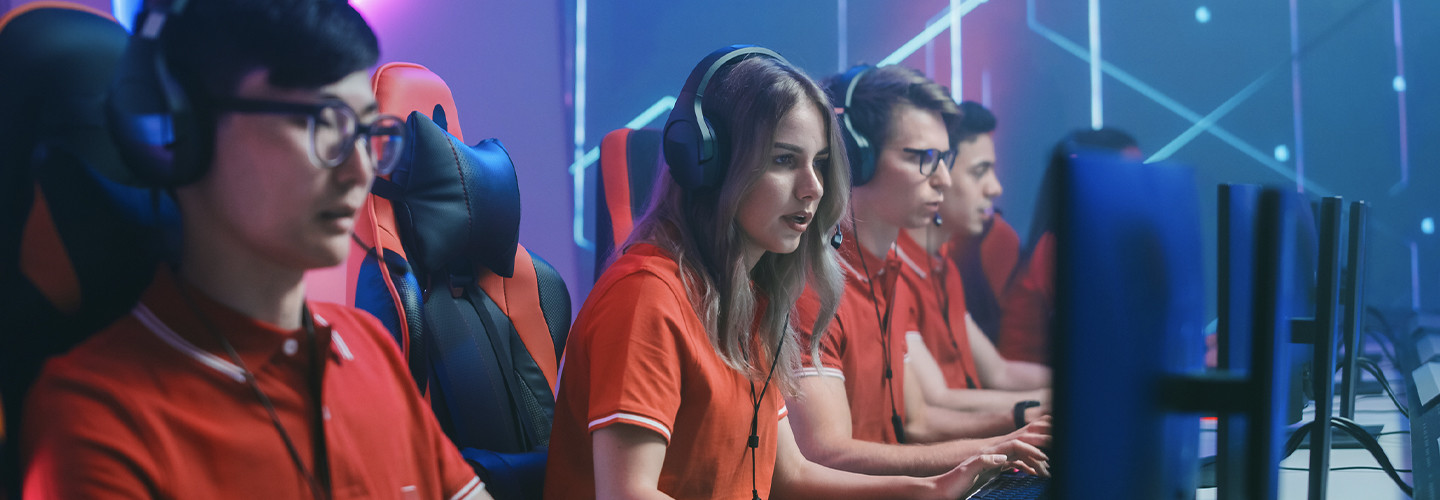What Are the Types of Esports Programs in Higher Ed?
Competitive esports programs, the forebears of the broader cultural esports wave, have exploded on college campuses since the mid-2010s. The nonprofit National Association of Collegiate Esports, founded in 2016, now boasts more than 240 member institutions nationwide that support more than 5,000 student-athletes. Intercollegiate teams compete for national championships, have their seasons chronicled on athletic department websites and enjoy some of the same benefits as traditional student-athletes.
To offer a truly competitive program, universities must invest in the latest and greatest desktops, monitors, peripherals and more, because even the smallest amount of lag or disruption can cause a team’s performance to go sideways. Programs looking to set themselves apart also may build out beautiful arenas, with color-coordinated lighting and onsite practice facilities. Almost all have some type of production or broadcasting setup to stream the competitions.
When it comes to serving the broader community, however, all of those bells and whistles may not be necessary. As university administrators have become more familiar with the gaming world, they’ve grown more aware of the fact that many their students are gaming on a casual basis. Some students get together for pickup basketball games or club activities; just as many are gathering to game. And there’s an important social aspect that’s lost when students are playing while while siloed in their dorm rooms.
Compare these community gaming spaces with racquetball or squash courts found in most college recreation centers. There is enough of a community to make these something you see on almost every college campus, even though a seemingly small group makes use of them. It’s important to make them available for students who want to find a connection with their classmates while engaging in an activity they enjoy. When it comes to gaming, the existing player base is enormous, and many students are looking for similarly dedicated space on campus.
LEARN MORE: Sergio Brack’s rapid rise leads to University of Maryland esports.
In some cases, these community facilities can share a space with competitive programs. In other situations, they can serve as part of the device lifecycle for top-end gaming computers: When the highest-spec desktops for competitive gamers are upgraded, the replaced devices can be cycled down to the community players.
Along with the competitive and community pieces, esports curriculum must be considered. Offering an esports major is still extremely rare, but plenty of schools within colleges and universities are incorporating esports-related teaching into existing coursework because it is a career field that is growing quickly. Beyond the direct connection through programs like game design, universities are starting to put an esports spin on their computer science, animation, media production and broadcasting, marketing, sports management, and business curriculum. To get real-world experience, students who want to work in esports can help with existing on-campus esports programs or try to land esports-specific internships with professional gaming organizations like Evil Geniuses.
If that all sounds like a lot, it is. It’s imperative to be realistic when it comes to managing all three aspects of esports. I like to compare it with designing a video game character: You only have so many points (or dollars, or space) to allocate to different attributes, so spend it wisely.
Whether you’re just getting started in collegiate esports or taking the next step, the experts at CDW are here to help prepare your esports program to serve all students on your campus.
This article is part of EdTech: Focus on Higher Education’s UniversITy blog series.
